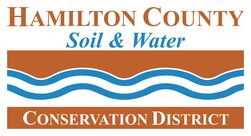Central Regional Envirothon
Each year Envirothon has a new yearly Current Issue question. Listed below are the past links form previous competitions. This information will not be tested in the 2020 Envirothon competition but can be used to compliment the current curriculum.
2018 Current Issue Resources- Pasture Management: Balancing Agriculture, Conservation and Wildlife
|
NRCS- IN Grazing and Foraging Website
Download the following documents for references
|
2018 Current Issue Learning Objectives:
1. Describe grazing and forage management practices, and explain how these practices are important to a sustainable agriculture economy, healthy water quality and healthy wildlife populations.
2. Identify common grass and legume species and describe their importance in grazing systems.
3. Identify common pasture weed species and their effects on pasture health and on animal health.
4. Understand conservation practices and their effects on soil health of pastures.
5. Understand how the growth curves of forages affect forage availability and pasture rotations throughout a typical year.
6. Understand how to evaluate pastures with the Pasture Condition Score Sheet and the value in doing these assessments.
7. Describe the pros and cons of grazing woodlands.
8. Understand the grazing behavior of different species and their impact on pasture systems.
9. Understand the importance of fences and water in the layout and management of an effective grazing system.
10. Understand why pasture land is important to Indiana’s agricultural industry.
11. Describe ways to balance livestock production with wildlife and water quality concerns. 12. Know the definition of stocking rates and how to calculate them.
1. Describe grazing and forage management practices, and explain how these practices are important to a sustainable agriculture economy, healthy water quality and healthy wildlife populations.
2. Identify common grass and legume species and describe their importance in grazing systems.
3. Identify common pasture weed species and their effects on pasture health and on animal health.
4. Understand conservation practices and their effects on soil health of pastures.
5. Understand how the growth curves of forages affect forage availability and pasture rotations throughout a typical year.
6. Understand how to evaluate pastures with the Pasture Condition Score Sheet and the value in doing these assessments.
7. Describe the pros and cons of grazing woodlands.
8. Understand the grazing behavior of different species and their impact on pasture systems.
9. Understand the importance of fences and water in the layout and management of an effective grazing system.
10. Understand why pasture land is important to Indiana’s agricultural industry.
11. Describe ways to balance livestock production with wildlife and water quality concerns. 12. Know the definition of stocking rates and how to calculate them.
Agriculture and the Environment: Knowledge and Technology to Feed the World
2019 Current Issue Objectives
1. Describe how agriculture has changed the natural ecosystems of the earth including wildlife habitat, soil biology, surface and ground waters, and biodiversity.
2. Explain how farming practices have changed over the last 50 years to reduce the loss of soil organic matter and soil microorganisms including no-till, conservation tillage and the use of cover crops.
3. Describe the positive impacts that sustainable agriculture has on the environment such as carbon sequestration.
4. Explain the methods that farmers use to control pests in crops and how they affect the environment including pesticides, crop rotation, GMO’s and IPM.
5. Explain how fertilizer runoff causes pollution and how producers manage fertilizer applications to minimize leaching and runoff using the practice of 4-R.
6. Define Genetically Modified Organism and explain how GMO’s have the capability to reduce pesticide usage.
7. Explain how herbicide tolerant crops allow farmers to practice no-till farming more efficiently.
8. Explain the risks of GMO crops to the environment including herbicide resistant weeds and Bt resistant insects.
9. Define Precision Agriculture and describe the important components of PA including auto guidance, GIS mapping, and application control (variable rate technology).
10. Describe how Precision Agriculture allows producers to minimize environmental impact while maximizing yields.
1. Describe how agriculture has changed the natural ecosystems of the earth including wildlife habitat, soil biology, surface and ground waters, and biodiversity.
2. Explain how farming practices have changed over the last 50 years to reduce the loss of soil organic matter and soil microorganisms including no-till, conservation tillage and the use of cover crops.
3. Describe the positive impacts that sustainable agriculture has on the environment such as carbon sequestration.
4. Explain the methods that farmers use to control pests in crops and how they affect the environment including pesticides, crop rotation, GMO’s and IPM.
5. Explain how fertilizer runoff causes pollution and how producers manage fertilizer applications to minimize leaching and runoff using the practice of 4-R.
6. Define Genetically Modified Organism and explain how GMO’s have the capability to reduce pesticide usage.
7. Explain how herbicide tolerant crops allow farmers to practice no-till farming more efficiently.
8. Explain the risks of GMO crops to the environment including herbicide resistant weeds and Bt resistant insects.
9. Define Precision Agriculture and describe the important components of PA including auto guidance, GIS mapping, and application control (variable rate technology).
10. Describe how Precision Agriculture allows producers to minimize environmental impact while maximizing yields.
